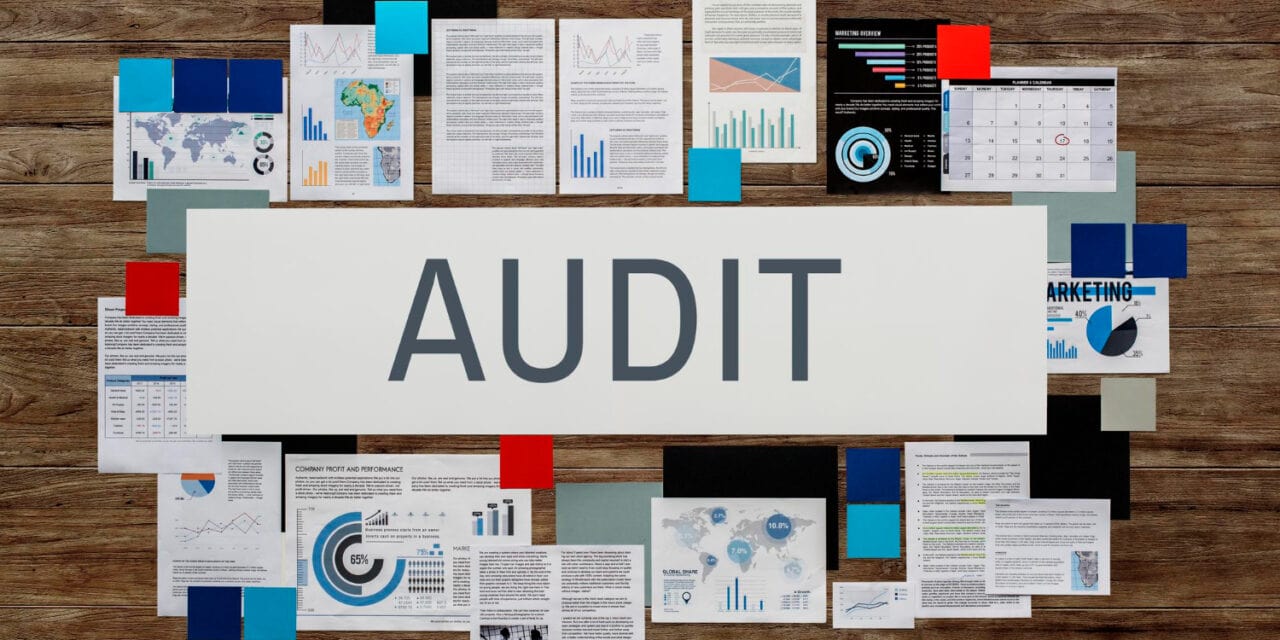Making the most of what you already have is just as important in the dynamic field of digital marketing as producing fresh content. Even your top-performing articles may eventually lose their appeal. Your once-valuable blog post might no longer match searcher intent as new competitors appear and algorithms change. A content audit can help with that. You can determine which aspects of your website are improving your rankings, which are degrading them, and how to address them with a comprehensive SEO content audit. A proper SEO refresh can revitalize your website, whether it involves updating an old blog post, updating metadata, or reorganizing internal links.
Understanding the Basics of a Content Audit
A content audit is a detailed review of all the content on your website. The goal is to assess the performance, relevance, and accuracy of each page so you can optimize your site for both search engines and users. Unlike a basic review, a full audit dives into SEO metrics, user engagement, and alignment with business goals.Think of it as a health check-up for your website content. Are all your pages still relevant? Are they driving organic traffic? Are they aligned with the latest keywords? Performing a content audit gives you the answers. By identifying content gaps, outdated information, broken links, poor keyword targeting, and technical issues, you can plan your next steps strategically. Instead of spending all your time and budget on creating new pages, you can refine your existing assets for maximum impact.
Why SEO Content Audits Are Important
There’s a common misconception that publishing new content is the only way to improve your search visibility. But the reality is, outdated or irrelevant content can drag your rankings down; even if you have hundreds of published posts. Search engines reward websites that are not just consistent, but also current. If your site hasn’t been reviewed in years, chances are you’re sitting on a goldmine of under-optimized content. A proper SEO refresh allows you to refine what’s already there, resulting in quicker gains than brand-new content creation. Another important reason for a content audit is user experience. As user expectations change, your content needs to evolve. Articles with outdated facts, broken visuals, or old formatting can lead to high bounce rates and low dwell time, signaling to search engines that the content is no longer valuable. An audit ensures that your content remains useful, accurate, and easy to consume.

Signs Your Website Needs a Content Audit
If you’re unsure whether it’s time to conduct a content audit, watch out for these indicators. A noticeable decline in organic traffic over time is one of the most obvious red flags. Similarly, if your bounce rates are unusually high or your average time on page is dropping, your content might not be meeting user intent. Another sign is if you’ve never revisited older posts. Content that was written years ago may still be live, but no longer contributes to your SEO goals. Keywords might be outdated, internal links might be broken, and external references may no longer be valid. Finally, if you’re planning a website redesign, new SEO strategy, or migration to a new CMS, a content audit is essential. It gives you a clear idea of what content to keep, improve, or remove entirely.
Steps to Perform a Comprehensive Content Audit
Performing a content audit might sound daunting, but breaking it down into steps makes it more manageable. The process generally includes four main phases: data collection, performance assessment, content evaluation, and strategic action.
1. Create a Content Inventory
Making a list of all the content you currently have is the first step. Blog entries, landing pages, product descriptions, service pages, and even out-of-date press releases fall under this category. You can pull URLs and important SEO metrics with the aid of tools like Google Search Console, SEMrush, Ahrefs, and Screaming Frog. Page titles, word counts, last updated dates, organic traffic, backlinks, bounce rates, and average time on page are all crucial metrics to record. This information serves as the basis for your audit and aids in determining which content is important and which requires attention.
2. Analyze Content Performance
Next, evaluate each page’s SEO performance. Which pages are generating traffic and backlinks? Which are stuck on page two of Google and need a small SEO refresh to push them to page one? Look for outdated content that is still ranking but could perform better with minor updates. Identify pages that have strong content but suffer from poor formatting or missing metadata. The idea is to spot high-potential pages that just need a little boost. Also, note pages with duplicate or thin content. These could be dragging your domain authority down and might need to be merged or deleted.
3. Categorize and Prioritize
Once you’ve evaluated all your content, it’s time to group them based on what action they need. Generally, content can be sorted into four buckets: keep as-is, update, merge, or delete. For example, evergreen guides that still get traffic might only need a quick SEO refresh like adding new internal links. Old news updates that no longer serve a purpose might be better off removed. And short, underperforming blog posts could be merged into comprehensive guides. This is also the phase where you review keyword alignment. Make sure each piece is targeting the right keyword and update where necessary. Keyword trends shift over time, and aligning your content with current search intent can result in a significant ranking boost.
How to Update Outdated Content Effectively
It is not necessary to rewrite everything in order to update out-of-date content. Often, minor adjustments can have a significant impact. Start by revising descriptions, meta titles, and headlines to incorporate target keywords and conform to contemporary click-through patterns. Make sure the most recent information is reflected in the body of the text. Add relevant outbound references, fix broken links, update statistics, and edit examples. To improve the visibility of your content in search results, you can also include schema markup or frequently asked questions. Your site’s structure is strengthened and its crawlability is enhanced when you include new internal links in your updated content. If your page had a high bounce rate, think about making the formatting better. To make it easier to read, use subheadings, short paragraphs, and relevant images. When done correctly, updating out-of-date content boosts your SEO and gives your audience more value.
Tools That Can Help With Content Audits
Although you can perform a content audit manually using spreadsheets, various SEO tools can streamline the process. Google Analytics and Google Search Console offer insights into traffic, CTR, and rankings. Screaming Frog helps with crawling and indexing issues, while Ahrefs and SEMrush provide in-depth backlink and keyword analysis. These tools can also reveal content gaps; topics that your competitors are ranking for but you aren’t. Addressing these gaps while performing an outdated content update can position your content to perform better in search results.
When to Run a Content Audit
The ideal frequency for a content audit depends on the size of your website and your publishing schedule. For smaller websites with occasional blog updates, once every six months may be sufficient. However, for larger sites or publishers producing new content weekly, quarterly audits are more effective. Running audits at regular intervals allows you to stay ahead of SEO trends and algorithm updates. It ensures your content remains accurate, keyword-optimized, and engaging; supporting both user satisfaction and search visibility.
Measuring the Results of Your Content Audit
After completing a content audit and implementing changes, it’s important to measure the impact. Use tools like Google Analytics and Search Console to track improvements in traffic, rankings, and engagement metrics. If you updated a blog post, monitor its position in SERPs before and after the update. A noticeable ranking boost typically takes a few weeks to reflect but can significantly increase organic clicks and reduce bounce rates. You should also see improvements in average session duration and a lower exit rate if your refresh was effective. Long term, the cumulative effect of updating and optimizing your existing content can often outperform the results of constantly publishing new content from scratch.
Challenges to Watch Out For
Although carrying out a content audit has many advantages, there are drawbacks as well. Focusing solely on traffic metrics is a common error. Even though a page may not receive a lot of traffic, it may still be important for conversions or brand authority. It’s also simple to underestimate how much time larger sites take to audit. The process can become too much to handle without a well-defined plan or tracking sheet. Setting objectives, assigning tasks to team members, and utilizing automation tools whenever feasible are therefore essential. Over-optimization is another pitfall. Your SEO efforts can be harmed by keyword stuffing or rewriting content solely to include a keyword. With each update, strive for authenticity, value, and clarity.

How We Help with Content Audits and Optimization
At our content and SEO agency, we don’t believe in shortcuts. Our audit process goes beyond the surface-level metrics. We dig into content structure, engagement patterns, and conversion potential to create a tailored action plan for your website. We approach each outdated content update with a focus on value, relevancy, and long-term visibility. Our goal is to help you reduce content bloat, recover lost rankings, and elevate your site’s authority; one strategic update at a time. From small blogs to enterprise-level websites, our team can guide your SEO journey through well-planned content audits that deliver measurable outcomes.
Conclusion
Just publishing new articles is insufficient in the digital world, where competition is intense and attention spans are limited. An effective content audit provides a road map for converting your current content into SEO assets that perform well. You can improve user experience and get a noticeable ranking boost by performing routine reviews, putting targeted SEO refresh strategies into practice, and updating out-of-date pages. You may be surprised to learn how much potential your current content has. Even a long-forgotten blog post can become a high-performing page on your website with the correct audit strategy.
FAQs
Q1: How often should I perform a content audit?
Ideally, a content audit should be conducted every 6 to 12 months, depending on your content volume and publishing frequency.
Q2: What’s the difference between a content audit and a content inventory?
A content inventory is simply a list of all your content. A content audit analyzes that list to determine what’s working, what’s outdated, and what needs to change.
Q3: Can a content audit improve my rankings even without new content?
Absolutely. Many websites see a significant ranking boost simply by updating existing content to reflect current SEO best practices and user needs.












